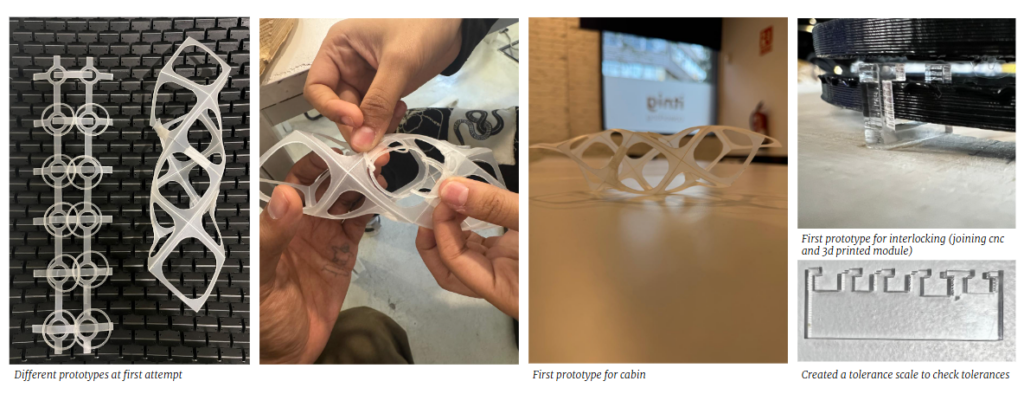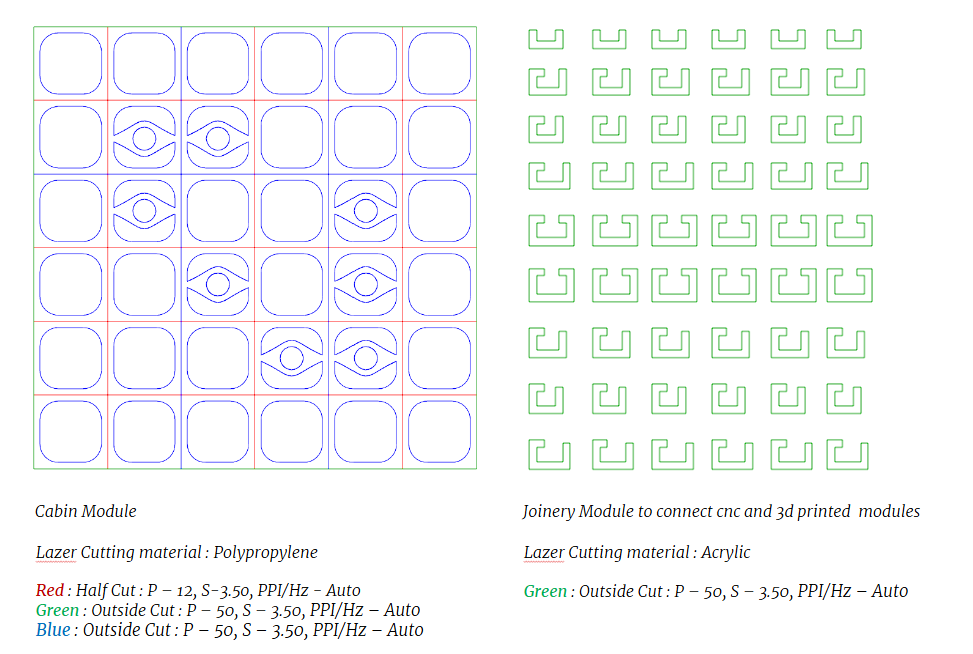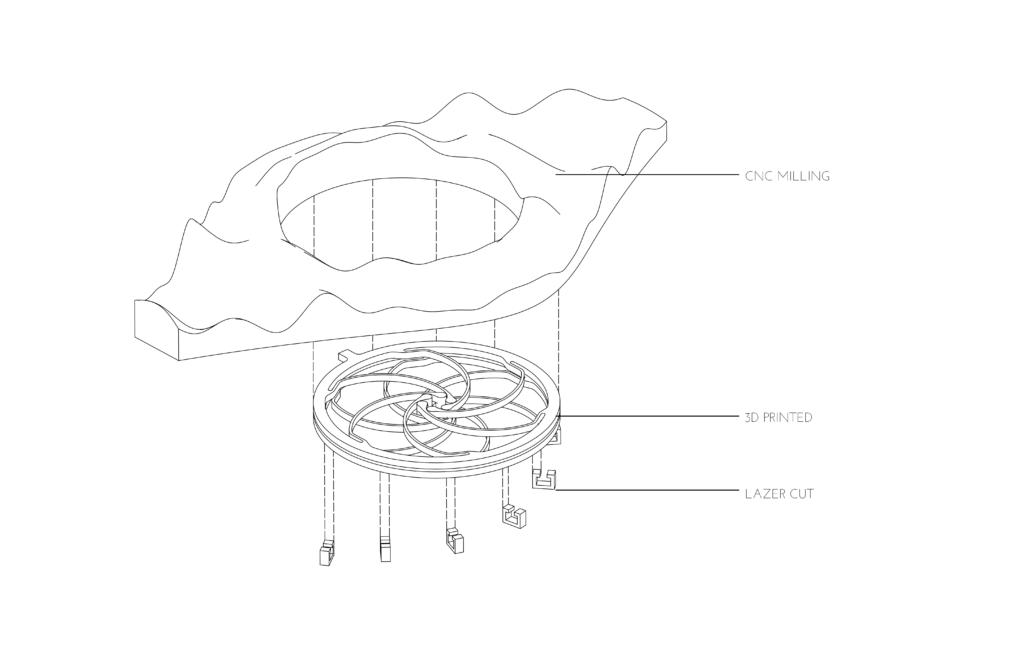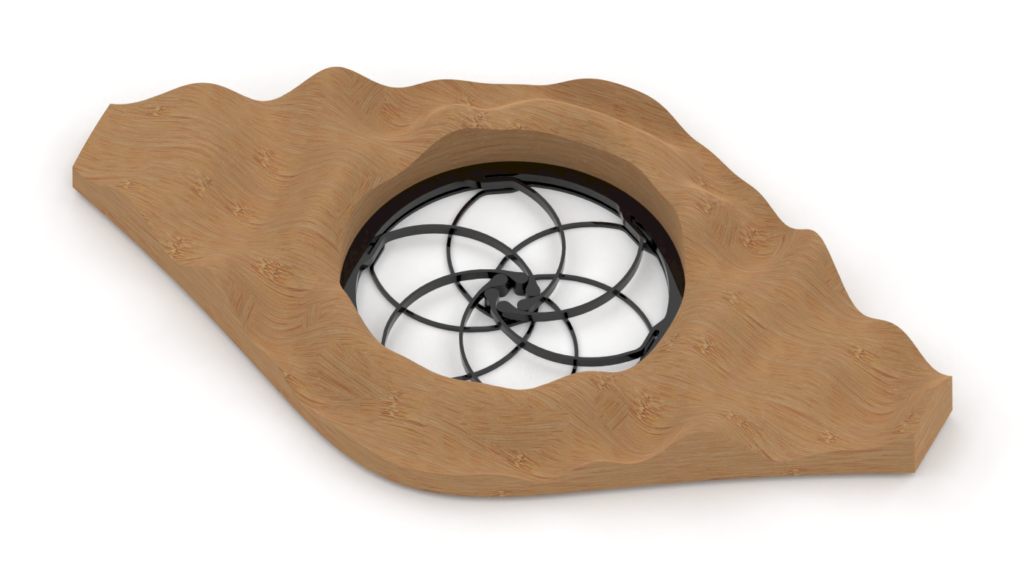DIGITAL FABRICATION
3D Printing | CNC Milling | Laser Cutting
“Rotating Ridge” is an innovative facade module designed for a compact cabin, exploring the integration of three key digital fabrication techniques—3D printing to CNC milling and laser cutting. This design is trying to establish responsive shading system, structural framework and an visually harmonized façade.
The shading is made of PLA filament using a 3D printer, and can be manually expanded and contracted to provide control over the level of light. Core of natural form, CNC-milled wood which balances organic aesthetics with precision. Interlocking joinery are made with laser cutting technique.
The cabin’s overall skin uses laser-cutting technique on polypropylene sheets, folded to create a textured, lightweight facade.
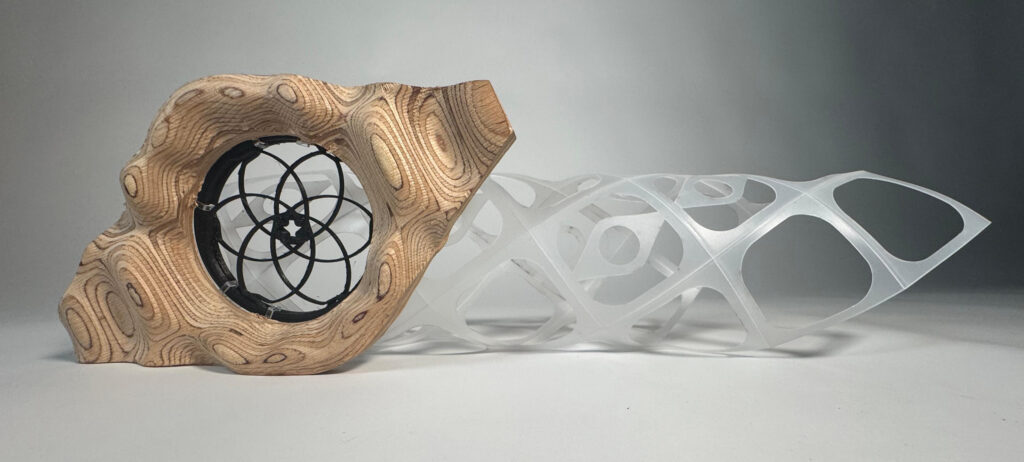
Introduction to Digital fabrication was a course on new production techniques through the relation between computer data and machine-oriented fabrication. The aim of the course was to explore the design opportunities with digital fabrication processes, understand them and explore their potentials and limitations and develop an integrated approach to design and production.
The task was to design and construct a scaled model of a cabin using the different fabrication processes.
The following is our exploration of these techniques, starting with the 3D printing in the first week, CNC cutting in the second and then laser cutting. It summaries our experimentation with different materials, procedures and programs. By prototyping with different materials and techniques, we were able to determine the best applications for each.
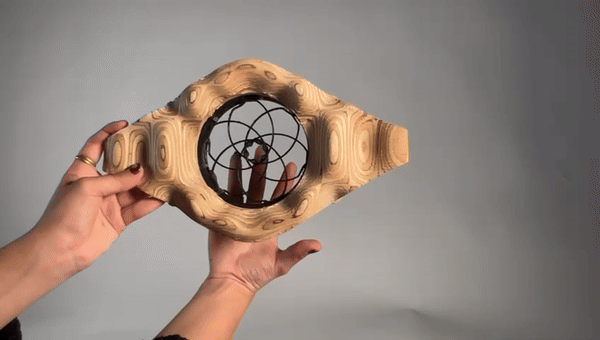
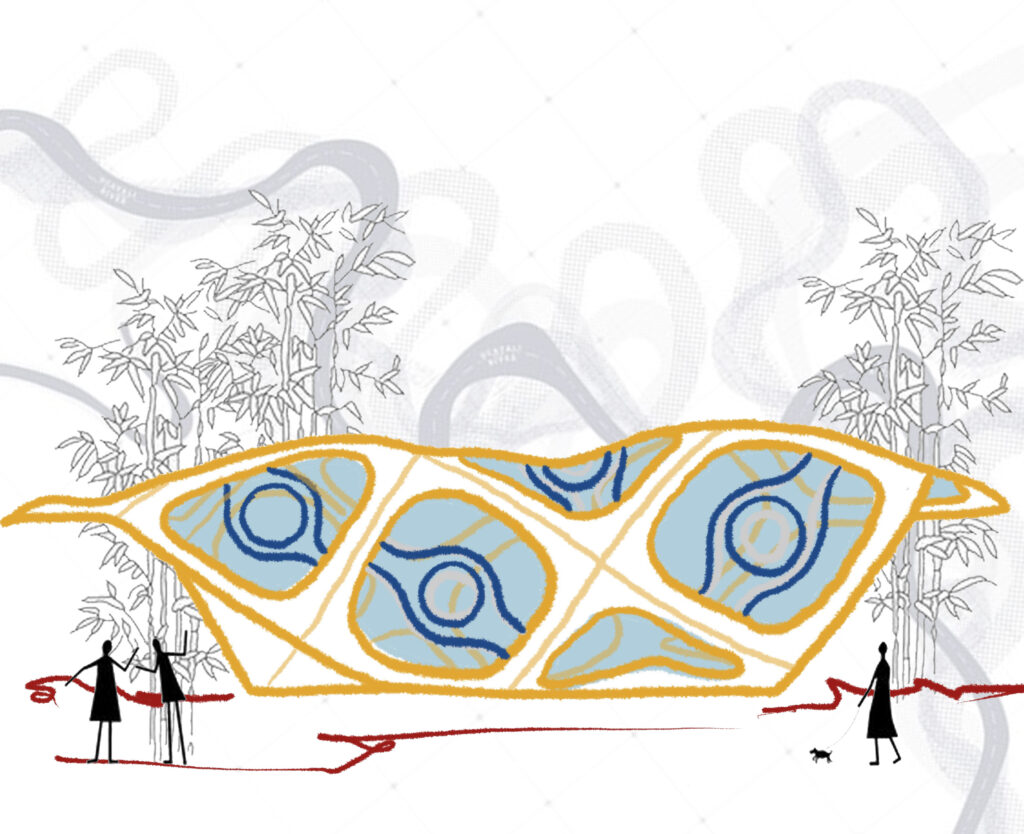
3D Printing
The idea was to understand the limits of PLA (polylactic acid), the material used to make the filament for 3D printing. We wanted to explore kinetic mechanisms for the opening system for the cabin. Looked into the working of Geneva and Iris mechanism and made a prototype of a module with iris mechanism.
The circular facade module is a dynamic shading device that responds to the sun’s movement. Its layered, petal-like segments open and close based on sunlight intensity, providing optimal shading during peak hours and allowing natural light in during low-light periods.
References
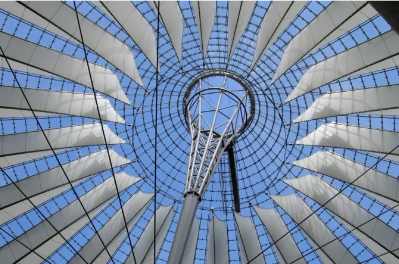
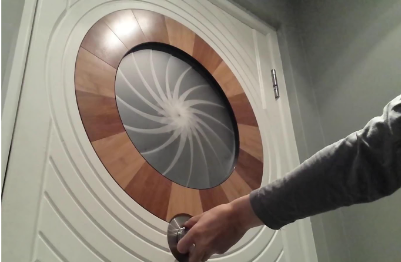
Design inspired by Iris gripper.
Mechanism

- The first two blades move in clock motion and the last two blades move in anti-clock motion.
- The circular figments are attached in the middle together to maintain the form and act as opposite forces.
- The two opposite motion movement helps to open up the shutter from the middle and create tensional gap between the two rings.
- Together this becomes an Iris Mechanical Façade Unit.
Prototyping




CNC Milling
We explored 3 axis subtraction method in CNC machine to create framework with plywood to anchor the 3D printed module.
References
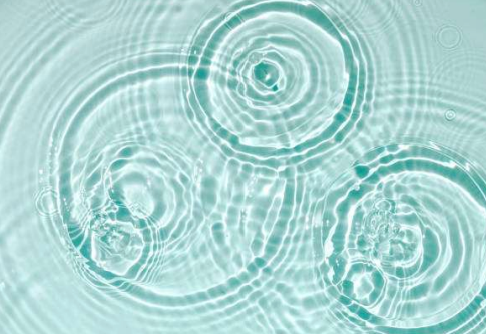
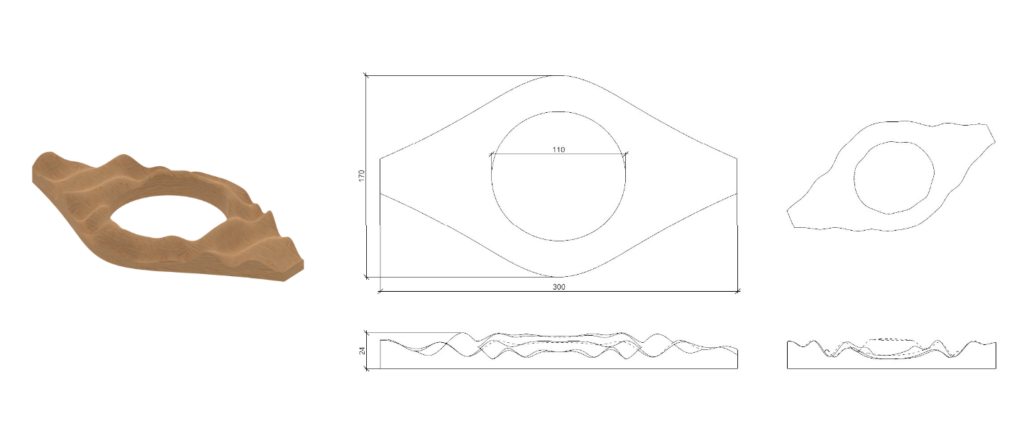
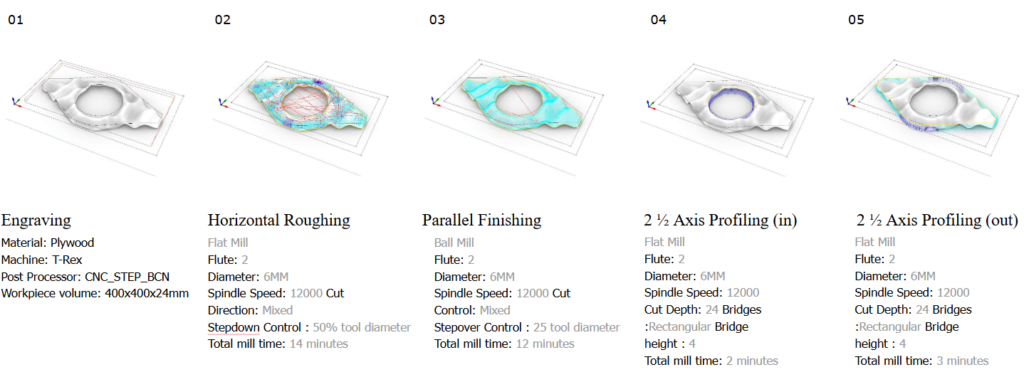
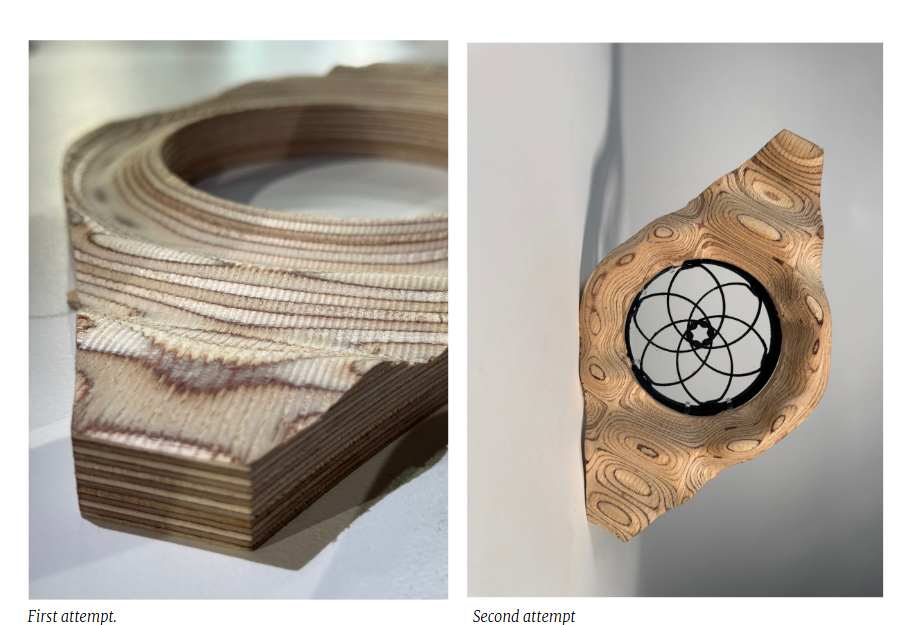
Laser Cutting
Using the polypropylene material provided to us, we explored its properties and experimented with laser cutting, which allowed us to achieve flexibility and create the desired shape.
References
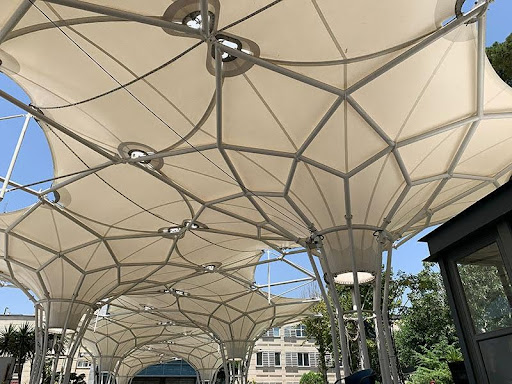
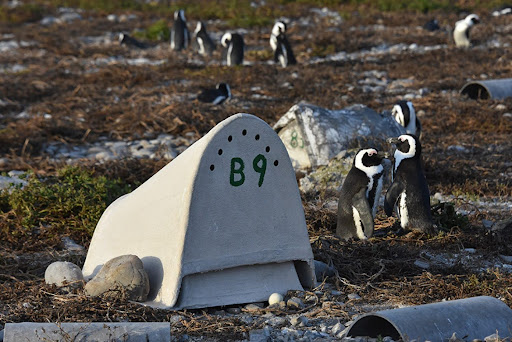
Fabrication process
